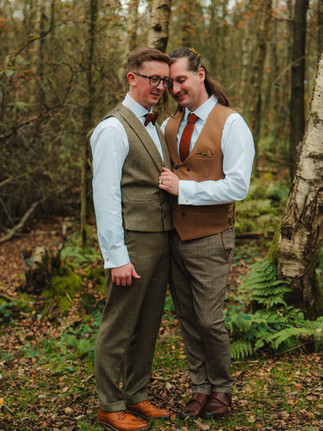Lets Define Tokenism?
Before diving in, let's start with the official definitions:
Tokenism: The practice of making only a perfunctory or symbolic effort to be inclusive of members of minority groups, especially by recruiting a small number of people from underrepresented groups to give the appearance of equality.
Tokenistic: Adjective form of tokenism, describing an action or effort that is insincere, superficial, or performative in nature.
Tokenism occurs when a person or organisation makes surface-level gestures to appear inclusive or diverse, but does not back those actions with genuine support, understanding, or systemic change. It is about looking the part without doing the work.
Can I Be Tokenistic Even if I’m Queer Myself?
Absolutely. Tokenism can come from anyone, including those within the LGBTQ+ community. Simply being queer does not mean you are automatically free from contributing to tokenistic practices. For example, organising something or representing LGBTQ+ people in a way that is only performative or self-serving (such as for financial gain, clout, or appearance) can still be tokenistic, even if your intentions are not harmful.
What’s the Difference Between Tokenism and Genuine Representation?
It often comes down to intent and impact.
If what you are doing:
Comes from a genuine desire to provide more representation,
Uplifts the LGBTQ+ community,
Creates opportunities for LGBTQ+ individuals,
Helps further inclusivity and allyship,
Then it will not be tokenistic. Your actions will have a positive impact and reflect authenticity.
However, if you are:
Doing it for personal or financial gain,
Trying to appear inclusive without putting in the work behind the scenes,
Making gestures that are performative without tangible support to the LGBTQ+ community,
Then it becomes tokenistic. Remember: performative actions, no matter how well-intentioned, often harm the community because they lack depth and sincerity.
Examples of Tokenistic Behaviours in the Wedding Industry
Here are a few examples of what tokenism can look like in the context of wedding suppliers:
Organising an LGBTQ+ Styled Photoshoot, but Only for Portfolio Gain
You organise a styled shoot featuring an LGBTQ+ couple or actors just to have queer representation in your portfolio. However, you fail to involve any LGBTQ+ suppliers behind the lens or consult with the LGBTQ+ community during the process.
Why this is tokenistic: It’s performative and surface-level, designed to make your brand look inclusive without doing meaningful work to uplift LGBTQ+ creatives.
Using Straight Models to Pretend to Be an LGBTQ+ Couple
You organise a styled shoot, involve LGBTQ+ suppliers behind the scenes, but hire two straight models to pose as an LGBTQ+ couple.
Why this is problematic: It misses the point of representation entirely. Authentic representation means involving real LGBTQ+ couples or individuals and creating opportunities for them. Using straight models perpetuates exclusion and reduces LGBTQ+ experiences to a performative aesthetic.
Rainbow Flags Without Action
You add a rainbow flag emoji to your social media bio or branding but stop there. You don’t educate yourself on LGBTQ+ issues, support LGBTQ+ businesses, uplift queer voices, or donate to LGBTQ+ causes.
Why this isn’t enough: While symbols like the rainbow flag are powerful, allyship requires action. Being an ally means doing ongoing work, such as learning, supporting, and actively contributing to the LGBTQ+ community. A rainbow flag on its own can feel empty if it’s not backed by real, tangible support.
How to Avoid Being Tokenistic
If you want to ensure that your actions are authentic and meaningful, here are a few steps you can take:
Educate Yourself
Learn about the LGBTQ+ community’s experiences, challenges, and histories. Take courses, read books, and seek out voices within the community.
Collaborate Authentically
Include LGBTQ+ individuals and suppliers in your work, and involve them throughout the process. Make sure their voices and experiences are centred, not exploited.
Reflect on Your Intentions
Ask yourself: Why am I doing this? Who does it benefit? If the answer is solely about your brand image, financial gain, or how it makes you look, take a step back.
Support the LGBTQ+ Community Beyond Appearances
Uplift LGBTQ+ voices by hiring queer talent, donating to LGBTQ+ charities, and promoting LGBTQ+ businesses.
Be Open to Feedback
If someone calls out tokenistic behaviour, listen, reflect, and learn. It’s not about being defensive but about doing better.
Go Beyond Pride Month
Your allyship should not begin and end in June. Support the LGBTQ+ community all year round, not just when it’s popular or profitable.
Final Thoughts: Allyship Is Action
To create meaningful change and avoid tokenism, your actions must come from a place of genuine care, learning, and inclusivity. Representation matters, but it needs to be authentic and uplifting, not surface-level or self-serving. If you’re putting in the work behind the scenes, supporting the LGBTQ+ community in tangible ways, and continuously educating yourself, your actions will always speak louder than performative gestures.
True allyship isn’t about looking inclusive—it’s about being inclusive, doing the work, and helping create opportunities and spaces where the LGBTQ+ community feels seen, heard, and celebrated.







Opmerkingen